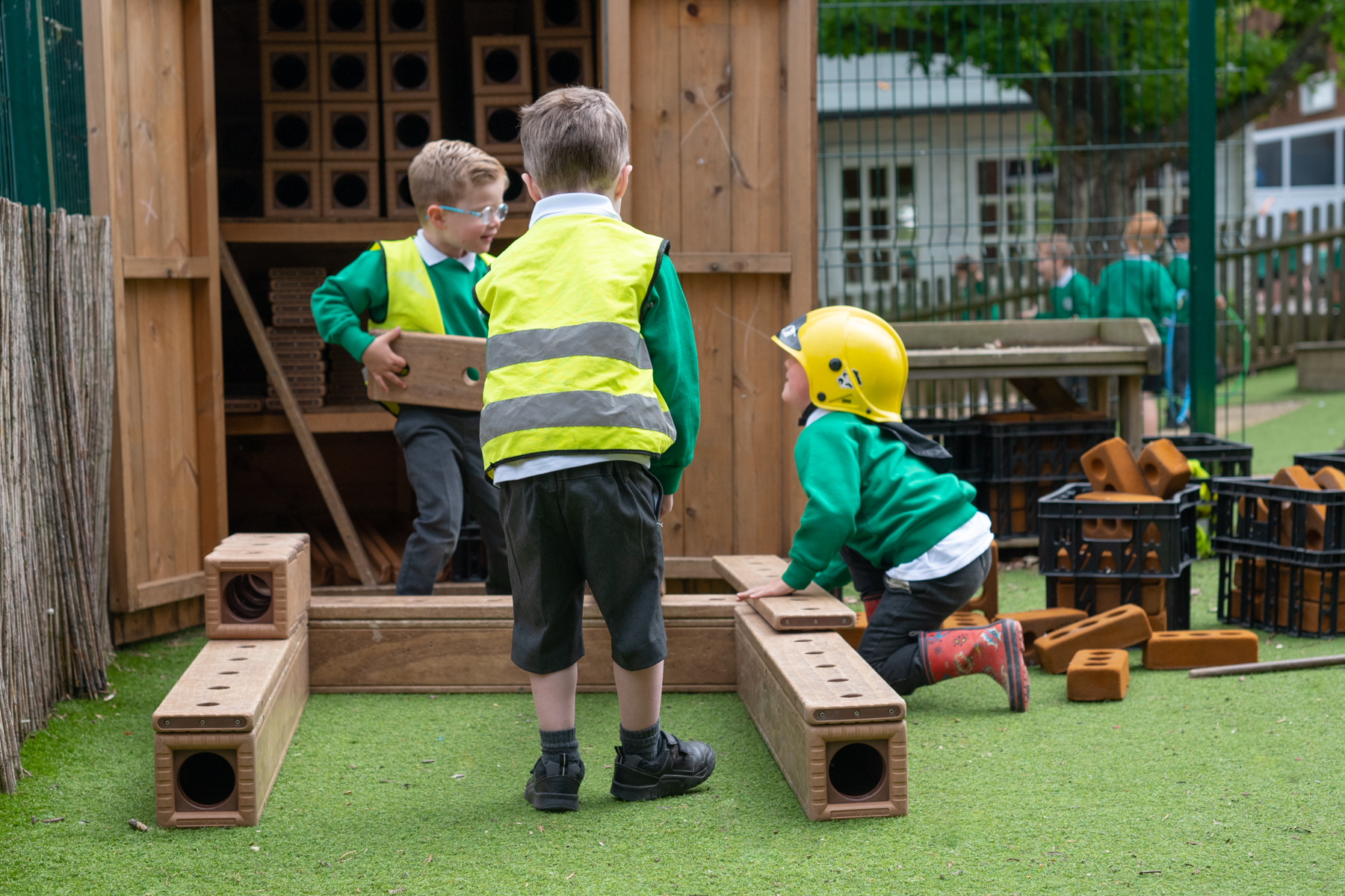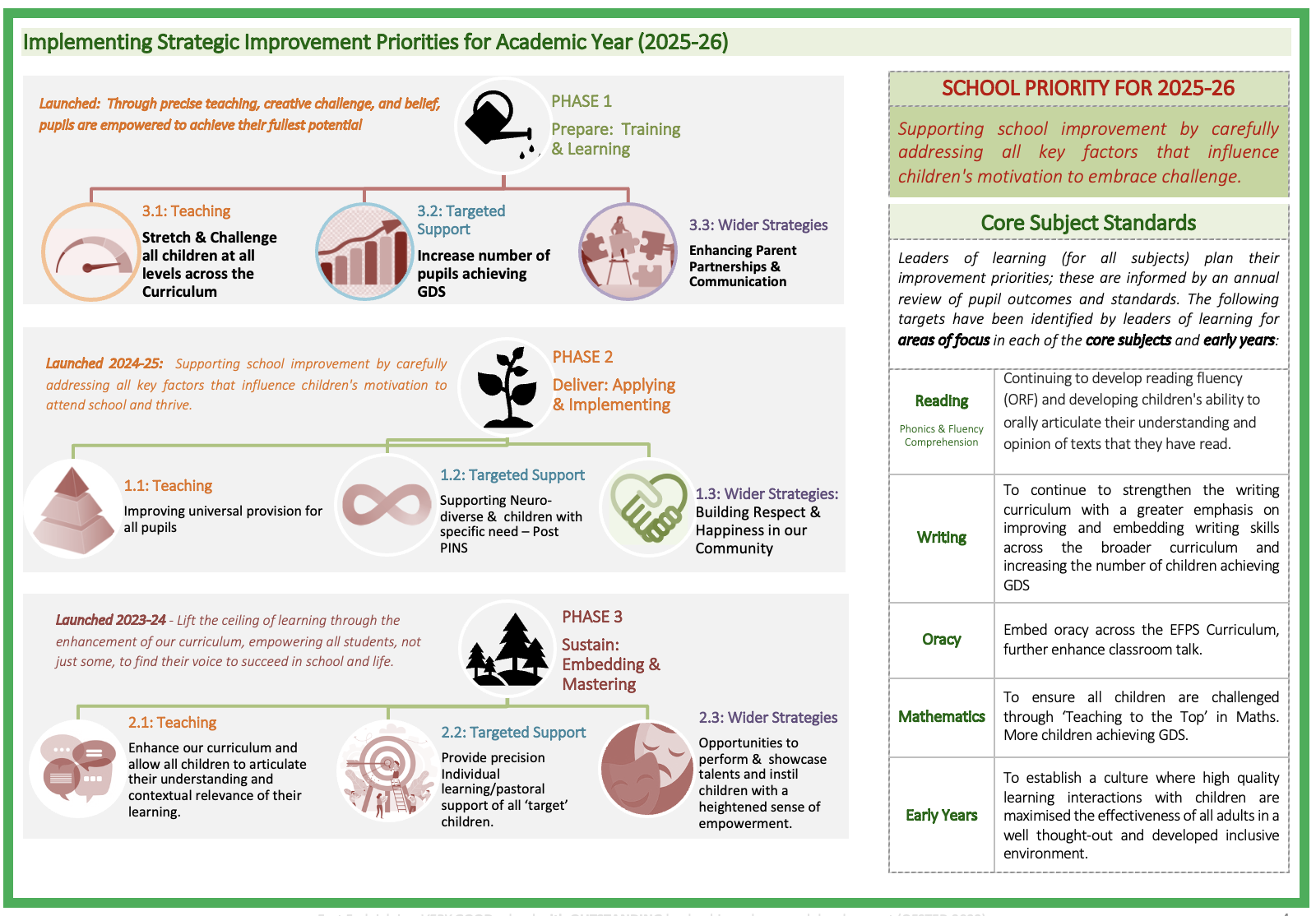School Improvement
Strategic School Improvement Planning at East Farleigh Primary School
Each academic year, the staff and Governors are led by the Headteacher through a process of self-evaluation (linked to ‘explore’ – EEF). The agreed and shared principles for writing the Strategic Improvement Plan at our school are:
- Leadership is distributed at all levels throughout the process to create ownership, opportunities for developing leadership potential and capacity for continuous improvement
- A leadership environment and school climate are created that are conducive to good implementation.
- It addresses all potential opportunities and barriers to achievement in the pupils’ environment, both inside and beyond the classroom
- Clear outcomes and success criteria are identified and planned for
- There is a direct link to accountability for both teachers and leaders with opportunities for governors to hold leaders to account
- Improvement in pupil outcomes and wider measures of success, including personal development and well-being, are evidenced
- Developing leadership of learning and professional development opportunities to secure and sustain improvements in teaching, learning and assessment are at the core of the plan
- There is a continuous cycle of self-evaluation and improvement, clearly linked to the OFSTED inspection framework

The strategic, long term commitment is to achieve outstanding standards for all pupils. The school has the capacity to continue to evaluate and reflect whilst effectively managing change. We have a strong team, committed to providing the very best outcomes for our pupils and improved life chances for our community. Due to this genuine dedication, strong leadership, improving quality of teaching and developing more engaging provision, pupils at East Farleigh will leave this school having made real achievements that extend beyond those subjects formally tested.
Our 5 Year Strategic Plan (2025-2030)
strategic document 5 year plan 2025 30.pdf
School Development Plan Summary 2025-26
A Phased Approach
Phase 1 – Short Term – Training and learning (links to ‘prepare’ – EEF)
This is the first part of the plan which sets the foundations. We recognise the importance of engaging in high-quality continued professional development, and we allow scope for sufficient time and funding to develop a secure skillset amongst relevant stakeholders to help ensure the success of planned whole-school development.
Phase 2 – Medium Term – Applying and implementing (links to ‘deliver’ – EEF)
Once training and learning has been secured, we then move on to the applying and implementing stage where the new initiatives begin to become visible across the school. At this point, coaching and mentoring become pivotal in empowering school staff to reflect on successes and further areas for development, this also helps to achieve whole-school consistency.
Phase 3 – Long Term – Embedding and mastering (links to ‘sustain’ – EEF)
The final evaluative stage of the process is perhaps the most important in effectively securing change in the longer term. Again, coaching and mentoring are a significant factor in this part of the process. Stakeholder voice plays a vital role in helping leaders to establish what is working well and ready to become embedded or mastered, and what still needs to be developed; this may then feed into the improvement cycle for the following year, particularly if further training and learning is required.












